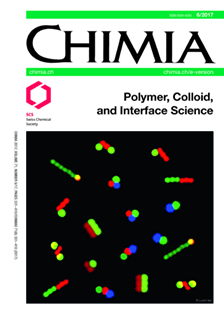Programmable Control in Extracellular Matrix-mimicking Polymer Hydrogels
DOI:
https://doi.org/10.2533/chimia.2017.342Keywords:
Bioactive materials, Cell–material interface, Extracellular matrix, Polymer hydrogels, Synthetic cell nichesAbstract
The extracellular matrix (ECM) and cells have a reciprocal relationship, one shapes the other and vice versa. One of the main challenges of synthetic material systems for developmental cell culturing, organoid and stem cell work includes the implementation of this reciprocal nature. The largest hurdle to achieve true cell-instructive materials in biomaterials engineering is a lack of spatial and temporal control over material properties and the display of bioactive signals compared to the natural cell environment. ECM-mimicking hydrogels have been developed using a wide range of polymers, assembly and cross-linking strategies. While our synthetic toolbox is larger than nature, often our systems underperform when compared to ECM systems with natural components like Matrigel. Material properties and three-dimensional structure ill-represent the three-dimensional ECM reciprocal nature and ligand presentation is an oversimplified version of the complexity found in nature. We hypothesize that the lack of programmable control in properties and ligand presentation forms the basis of this mismatch in performance and analyze the presence of control in current state of the art ECM-mimicking systems based on covalent, supramolecular and recombinant polymers. We conclude that through combining the dynamics of supramolecular materials, robustness from covalent systems and the programmable spatial control of bio-activation in recombinant ECM materials, the optimal synthetic artificial ECM could be assembled.Downloads
Published
2017-06-28
Issue
Section
Scientific Articles
License
Copyright (c) 2017 Swiss Chemical Society

This work is licensed under a Creative Commons Attribution-NonCommercial 4.0 International License.
How to Cite
[1]
K. S. Hof, M. M. C. Bastings, Chimia 2017, 71, 342, DOI: 10.2533/chimia.2017.342.







